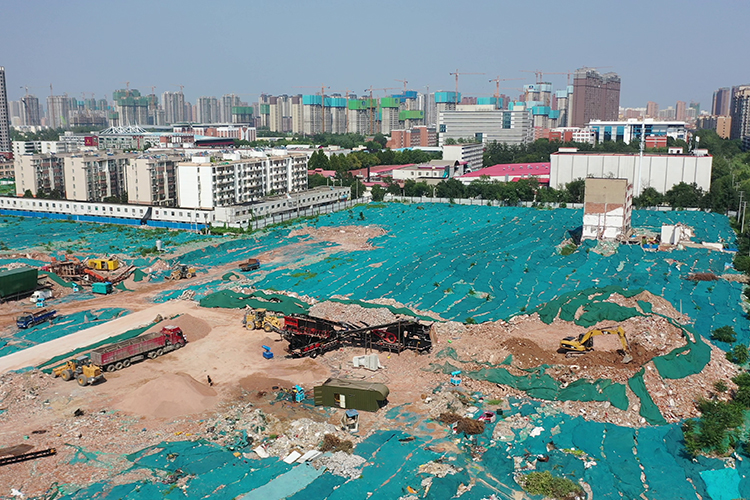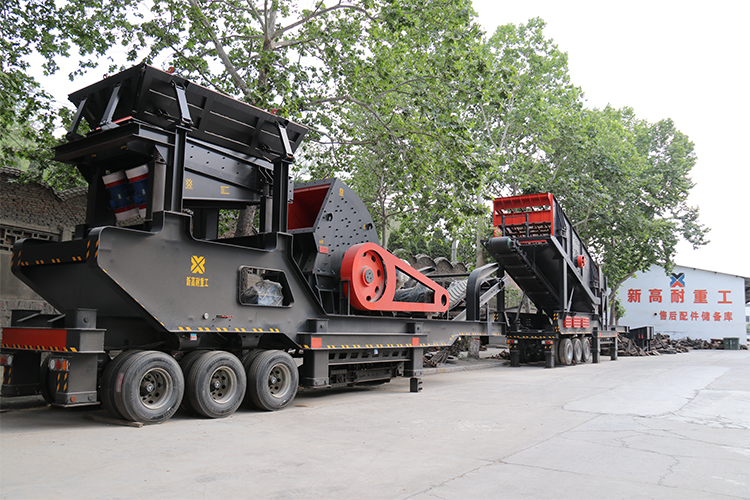
 xgncrusher
xgncrusher
Current status of construction waste disposal
Construction waste is a product of the comprehensive acceleration of the metabolism of the construction industry. Construction waste is mostly solid waste, which is generally generated during the construction process or during the maintenance and demolition of old buildings. The content of waste generated by different structural types of buildings varies. It is mainly composed of concrete, mortar, bricks, steel bars and muck, as well as other light materials such as wood and plastic for decoration.
According to relevant statistics, my country's urban construction waste output reached 1.5 billion tons in 2014, and continues to surge at an annual rate of 10%. It is expected to reach about 2 billion tons in 2015, but my country's construction waste treatment rate is only about 5%. There is a considerable gap between the 90% and 95% processing levels in developed countries.
At present, the main measure for the treatment of construction waste in my country is to bury it underground, but the harm is long-term and huge:
1. From a social perspective: the accumulation of construction waste occupies a large amount of land. If 10,000 tons of construction waste were piled up, it would occupy an area of 2.5 acres; the underground filling will cause harm to groundwater and soil structure. Problems such as flying dust and dust have caused serious environmental pollution.
2. From an economic perspective: A large amount of unprocessed construction waste consumes a large amount of land acquisition fees, garbage removal freight and other construction funds.
Therefore, it can be seen from the above analysis that finding a way to turn construction waste into treasure and turn waste resources into resources has huge social and economic benefits. The resource utilization of construction waste is the only way for China to develop sustainably and realize a circular economy. .

Construction waste recycling methods
The recycling of construction waste is the process of turning construction waste into treasure. For example, in addition to landfilling of construction waste, in developed countries, construction waste is used as raw material to make recycled aggregates for concrete and brick making. Some researchers pointed out that construction waste is a treasure. After effective development, my country's construction waste utilization rate can reach more than 95%.
1. Classification of construction waste: mainly sorting and recycling scrap steel bars, metal, wood, etc. that can be reused in construction waste.
2. Recycled bricks made from construction waste: As a traditional building material, solid clay bricks no longer meet the needs of the development of the times. Using construction waste to produce recycled bricks and other new building materials can not only meet the environmental requirements of the market for building materials, but also consume A large amount of construction waste. For example, the production of 150 million standard bricks can consume more than 400,000 tons of construction waste, saving an area of 160 acres for piling garbage.
3. Production of recycled aggregates from construction waste: Using construction waste to produce recycled aggregates is also one of the main ways of recycling construction waste in my country. After the construction waste is initially cleaned and the recyclable steel bars and wood are sorted, the masonry and cement concrete blocks are broken into aggregates through crushing equipment, which are then screened and graded by vibrating screens to remove impurities and form aggregates with a certain particle size. Building materials are raw materials, and then auxiliary materials such as cement and fly ash are added to the raw materials according to the gradation design requirements. After adding a part of water, they are stirred into concrete soil, which can be used to make different building products and road construction products. These products can completely replace ordinary sand. Stone is used in infrastructure construction such as roads.

The recycling and utilization of construction waste can realize the economic, social and ecological benefits of recycling, harmlessness and reduction of construction waste. Xingaonai mobile crushing station truly realizes the close processing of construction waste and provides users with simple, efficient and low-cost project operation hardware facilities for construction waste treatment. At the same time, according to the different needs of different customers, the Xingaonai mobile crushing station can fully meet the requirements of various stages such as coarse crushing, medium fine crushing, ultra-fine crushing, sand making, sand washing, shaping and screening, becoming an ideal choice in the field of construction waste treatment. Select a device.
Superior: No content!
Abajo: No content!
Nuestros productos se han exportado a más de 170 países de África, Asia, América del Sur, Europa, etc. Estamos aquí para ofrecerle mejores productos y servicios.
Copyright © 2024-2030 Xingaonai Group Todos los derechos reservados. Sitemap